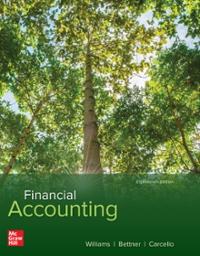

Solve all the following questions. Thank you
Exercise 1.23. The Monty Hall problem is a famous math problem loosely based on a television quiz show hosted by Monty Hall. You (the contestant) face three closed doors. There is a big prize behind one door, but nothing behind the other two. You are asked to pick one door out of the three, but you cannot yet see what is behind it. Monty opens one of the two other doors to reveal that there is nothing behind it. Then he offers you one chance to switch your choice. Should you switch? This question has generated a great deal of confusion. An intuitively appeal- ing quick answer goes like this. After Monty showed you a door with no prize, the prize is equally likely to be behind either one of the other two doors. Thus switching makes no difference. Is this correct? To get clarity, let us use the simplest possible model. Let the outcome of the experiment be the door behind which the prize hides. So the sample space is 1 = (1, 2, 3). Assume that the prize is equally likely to be behind any one of the doors, and so we set P[ 1) = P(2) = P(3) = 1/3. Your decision to switch or not is not part of the model. Rather, use the model to compute the probability of winning separately for the two scenarios. We can fix the labeling of the doors so that your initial choice is door number 1. In both parts (a) and (b) below determine, for each door i, whether you win or not when the prize is behind door i. (a) Suppose you will not switch. What is the probability that you win the prize? (b] Suppose you will switch after Monty shows a door without a prize. What is the probability that you win the prize? Exercise 1.24. Suppose the procedure of the quiz show is as described in the previous Exercise 1.23: you choose a door, Monty opens one of the two other doors with no prize, and you get to switch if you wish. Now suppose we have three positive numbers p1, p2, p1 such that Pi + pz + p3 = 1 and the prize is behind door i with probability p;. By labeling the doors suitably we can assume that pi 2 p2 2 p3. Assume that you know the probabilities p1, p2. p3 associated to each door. What is the strategy that maximizes your chances of winning the prize?5. (6 points) The Graduate Record Exam (GRE) is an exam most students must take to apply to graduate schools. Suppose you are interested in studying the effects of time spent studying for the GRE on the score of the math section of the test. You propose the following model: log(score) = Po + Bystudy + u. where score = score on the math section of the GRE. study = time spent studying for the math section of the GRE in hours. And you get the following results: log(score) = 10 +0.03study What does coefficient estimate 0.03 mean in this case? 6. (6 points) What is the difference between the disturbance i and residual d? 7. (6 points) What does it mean by an unbiased estimator? Is the OLS estimator for , unbiased? Explain. 8. (14 points) Suppose you are interested in studying the effects of education on wages, You gather four data points and use ordinary least squares (OLS) to estimate the following simple linear model: wage = fo + Reduc + 1, where wage is hourly wage in dollars and educ is years of formal education. After running your regression, you decide to examine how the fitted values of wages from your regression compare to the actual wages in your data set. These data are summarized in the following table:QUESTION 1 Answer any 3 out of 5 questions. Answer your first choice of question here. DO NOT press submit before answering all 3. Question 1: Name the following incoterms: DAP, CIF, FOB, and CFR. Explain each incoterm and how they affect the export costing of goods. (1.25 Marks for Each] Question 2: List and describe the four modes of delivering services internationally? . List all the names (1 Mark) . Describe each mode (2 Marks) . Provide examples for each mode (2 Marks) Question 3: A lumber mill, Milton Lumber Mill (MLM) creates a large amount of pulp and sawdust as a by-product of its core business. It cannot sell this domestically. Rather than incurring the cost of disposal for this by-product, the executive team wonders whether another market could be explored. You are the international trade manager of MLM (Milton Lumber Mill). You have the following tasks: . List all the steps of the research process. (1 mark) . Create a short report on how MLM will conduct international trade research using all the steps of the research process (4 Marks) Question 4: What is Exploratory, Causal and Descriptive research? Provide descriptions using examples of Global Trade Business. Question 5: What costs should be considered by importers? Discuss with examples. (3 Marks) Should importers include ethical sourcing as their cost? Why or why not. Discuss using examples. (2 Marks)











